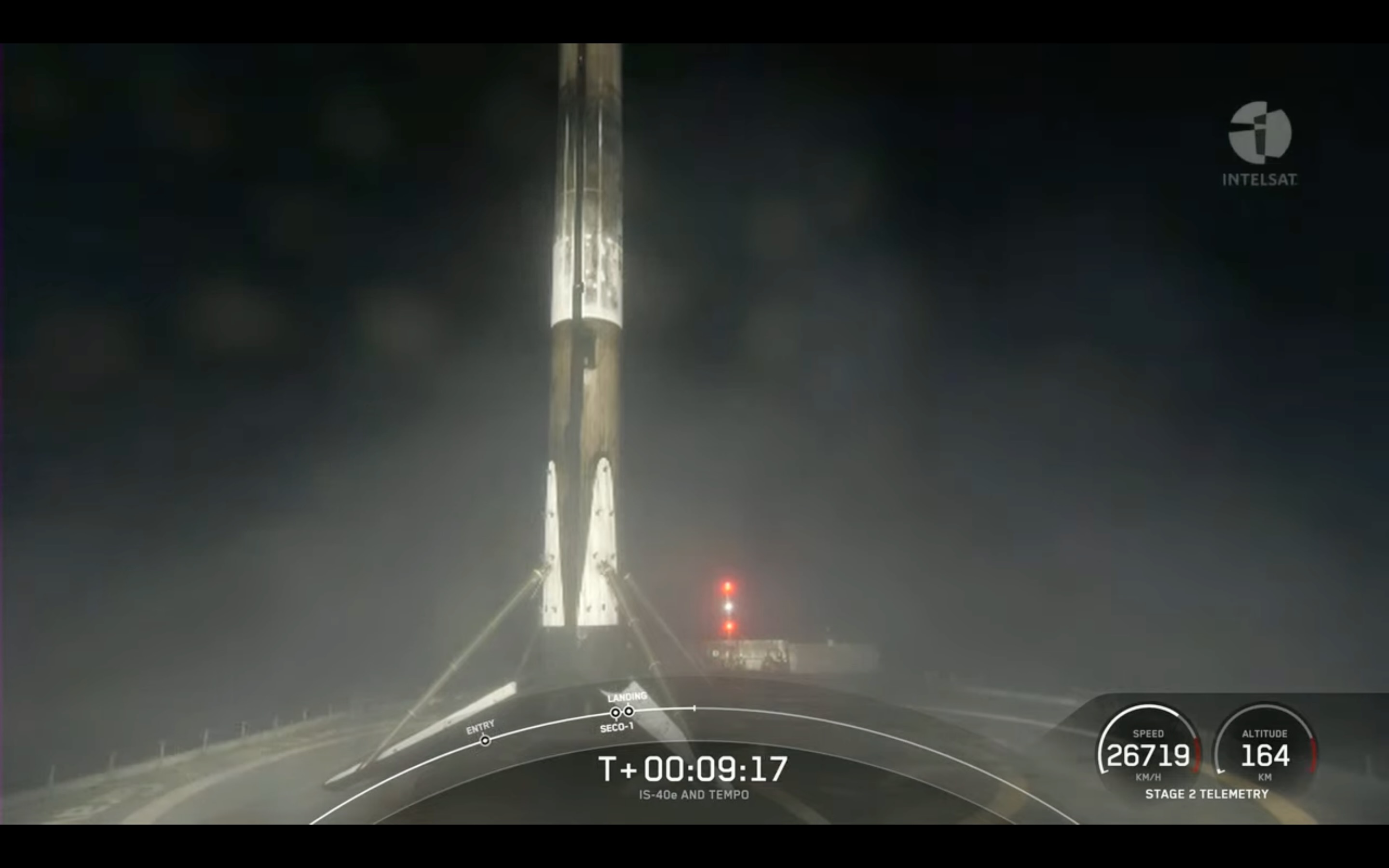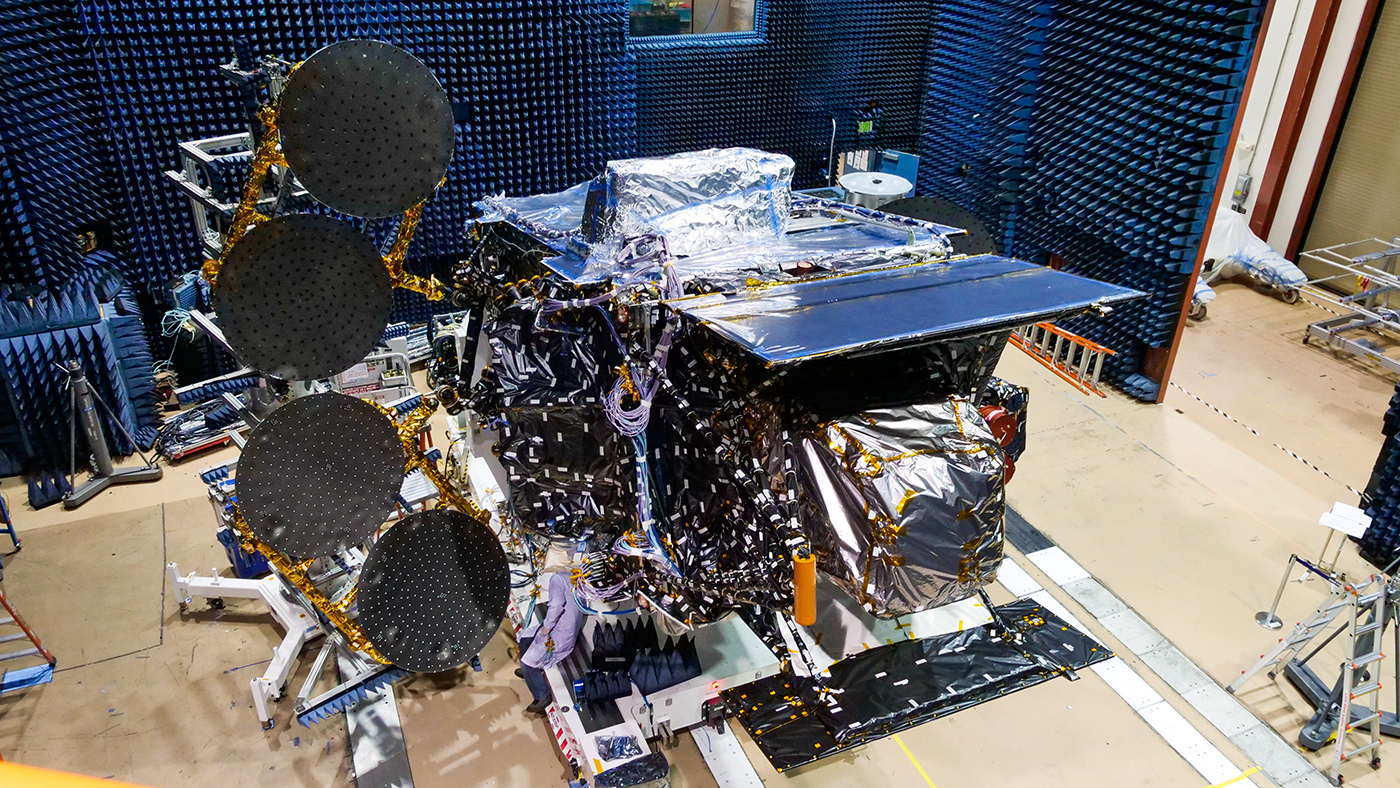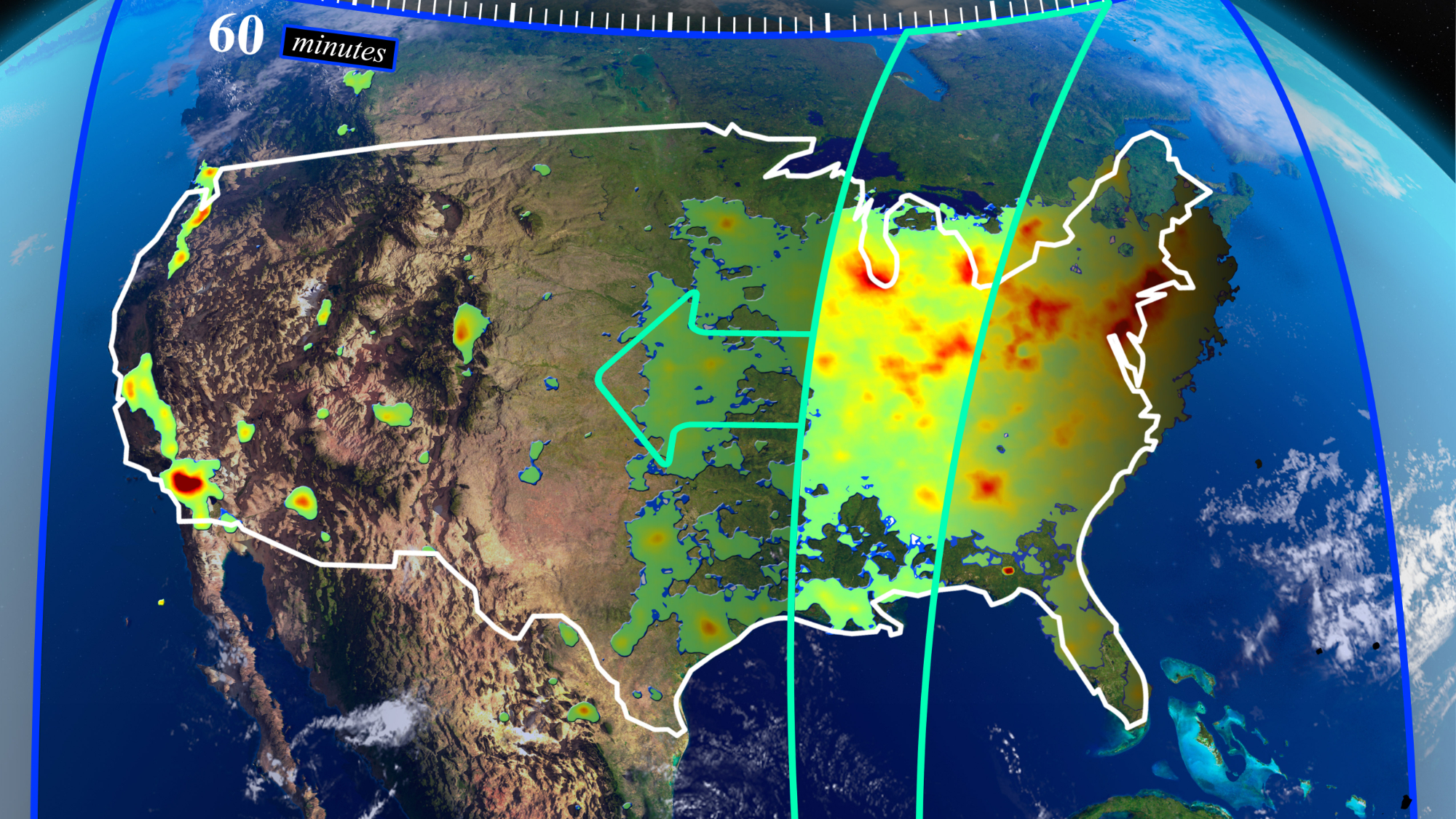SpaceX launches Intelsat satellite with NASA Earth-observation experiment, lands rocket
It was SpaceX's 23rd launch of the year already.
SpaceX launched a commercial communications satellite into orbit with a NASA Earth science instrument aboard early Friday morning (April 7).
A SpaceX Falcon 9 rocket lifted off from Florida's Cape Canaveral Space Force Station at 12:30 a.m. EDT (0430 GMT), carrying the Intelsat 40e satellite toward geostationary transfer orbit.
The Falcon 9's first stage was making its fourth flight, and it will likely launch again in the future; the booster landed successfully on the company's drone ship A Shortfall Of Gravitas in the Atlantic Ocean just under nine minutes after liftoff.
The rocket's upper stage, meanwhile, deployed Intelsat 40e on schedule, about 32.5 minutes after launch.
Related: 8 ways that SpaceX has transformed spaceflight

Intelsat 40e is an advanced geostationary satellite that will provide high-throughput connectivity to the company's government and enterprise customers across North and Central America.
The satellite, developed by Colorado-based Maxar Technologies, also carries NASA’s Tropospheric Emissions Monitoring of Pollution (TEMPO) as a hosted payload.
Get the Space.com Newsletter
Breaking space news, the latest updates on rocket launches, skywatching events and more!
Intelsat 40e will settle at 91 degrees West in a geostationary orbit (GEO), about 22,000 miles (36,000 kilometers) above Earth's equator. From there, the satellite will perform its main communications role but also allow TEMPO to take hourly snapshots of air pollution over North America.
Spacecraft in geostationary orbit effectively appear in a fixed position over Earth, whereas those in low Earth orbits complete around 16 orbits every 24 hours, and may only pass over a certain area once every day.

TEMPO will measure ultraviolet, visible and near-infrared light spectra to detect levels of key pollutants including ozone in the lower troposphere, formaldehyde and nitrogen dioxide.
"We have several other missions that make observations of atmospheric constituents and atmospheric composition," Karen St. Germain, Earth Science Division director at NASA's headquarters, said during an April 5 press briefing with reporters. "The real unique difference here with TEMPO is going to be that geostationary look."
It will also provide much higher resolution data than other missions, St. Germain added.
TEMPO was developed by Ball Aerospace and has a primary mission of 20 months, but could go on working beyond this. Intelsat 40e itself carries two large solar arrays to provide power and is designed to operate for at least 15 years.
The hosted payload approach was hailed by both Maxar and NASA officials during the media call.

"The TEMPO program really is a win-win-win for the major entities involved," said Aaron Abell, TEMPO project manager at Maxar. "It allows unused capacity on Maxar's heritage satellite design to be leveraged for government missions. This reduces the cost of access to space for the government as well as reduces the cost for Intelsat, as they're compensated for their support of the TEMPO mission."
"The total cost to NASA is approximately $210 million," said Kevin Daugherty, TEMPO project manager at NASA's Langley Research Center in Virginia. "Of that, just over $90 million was for the instrument development itself. And the remainder has been for both paying our contractors for hosting TEMPO and then integration, but as well as some support engineering and management that's been going on."
Daugherty added that NASA is working on a "lessons learned session" to look at how best to implement and approach such partnerships with commercial actors in the future.
Friday's launch was SpaceX's 23rd of the year, and the Falcon 9's touchdown was the company's 184th orbital rocket landing overall to date.
Editor's note: This story was updated at 1:15 a.m. ET on April 7 with news of successful launch, rocket landing and satellite deployment.
Follow us @Spacedotcom, or on Facebook and Instagram.
Join our Space Forums to keep talking space on the latest missions, night sky and more! And if you have a news tip, correction or comment, let us know at: community@space.com.

Andrew is a freelance space journalist with a focus on reporting on China's rapidly growing space sector. He began writing for Space.com in 2019 and writes for SpaceNews, IEEE Spectrum, National Geographic, Sky & Telescope, New Scientist and others. Andrew first caught the space bug when, as a youngster, he saw Voyager images of other worlds in our solar system for the first time. Away from space, Andrew enjoys trail running in the forests of Finland. You can follow him on Twitter @AJ_FI.








